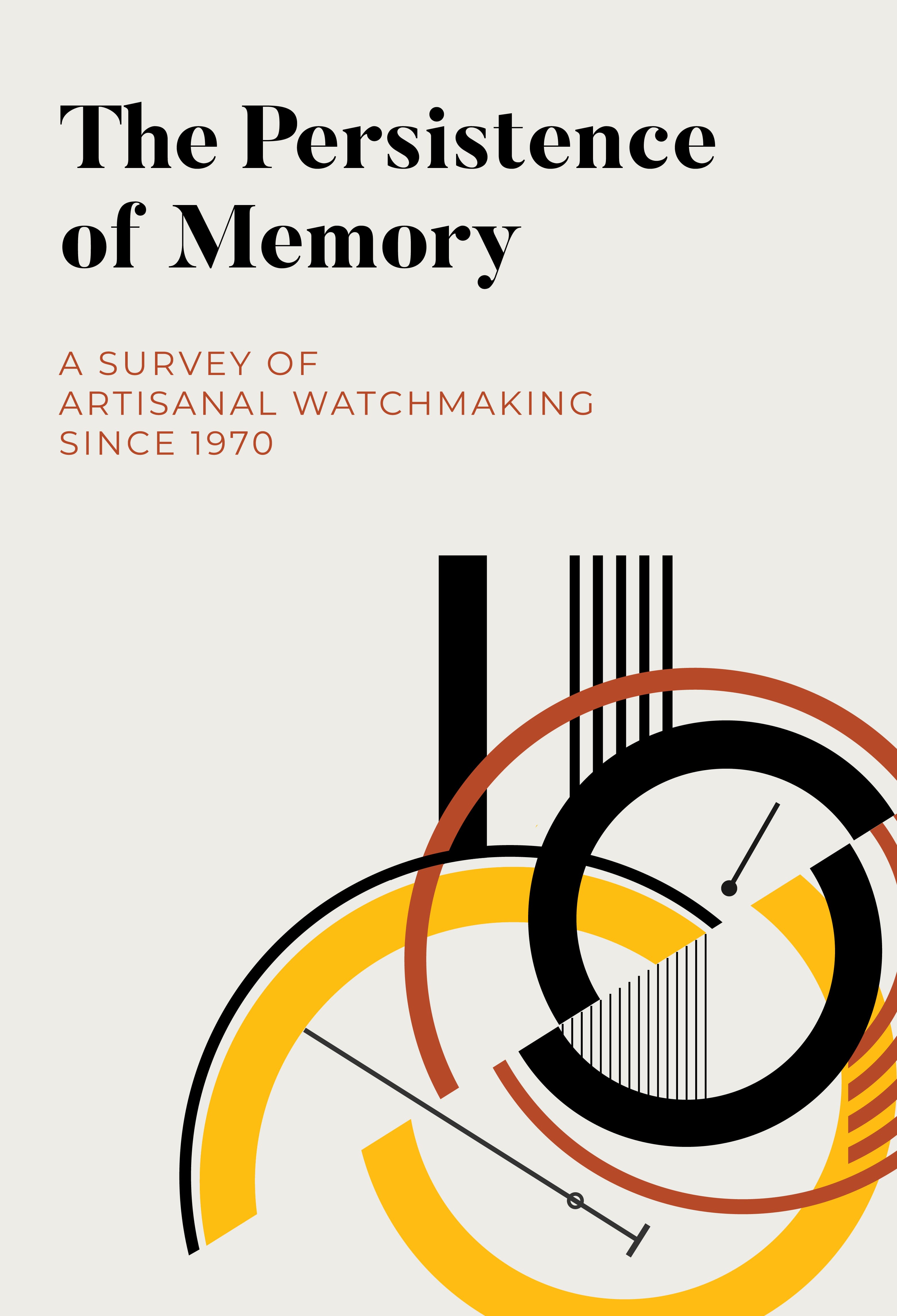- GEORGE DANIELS
- DEREK PRATT
- THOMAS ENGEL
- RICHARD DANERS
- ROGER W. SMITH
- FRANÇOIS-PAUL JOURNE
- PHILIPPE DUFOUR
- FRANCK MULLER
- DANIEL ROTH
- KARI VOUTILAINEN
- REXHEP REXHEPI
- GÄEL PETERMANN
- FLORIAN BÉDAT
- RÉMY COOLS
- GERALD GENTA
- VIANNEY HALTER
- JEFF BARNES
- FELIX BAUMGARTNER
- MARTIN FREI
- DENIS FLAGEOLLET
- MAXIMILIAN BÜSSER
Curatorial Statement
A Survey of Artisanal Watchmaking
Before the emergence of formalised structures of watch production in the early 19th century, serving as precursors to the modern watch manufacturing houses we know today, watchmaking existed in a cottage industry like setting where watchmakers pursued their métier “independent” of the commerciality of enterprise and rigidness of industry.
These technical artisans are akin to artists, painting in steel and gold instead of oil on canvas. Whether it is their pursuit of horological advancement or their commitment to finished perfection, their creations, a tangible representation of their watchmaking approach, are prized for their technological, intellectual, and artistic attributes; smudging the line between watchmaking tradition and avant-garde innovation.
Up till the last quarter of the 20th century, watchmakers devoted their entire careers to the top watchmaking houses that competed in annual chronometer competitions whilst offering their personal services on their own time, to produce on subscription, watches for collectors. The advent of quartz technology and the ensuing watchmaking crisis of the 70s and 80s reshaped that order forever.
In 1969, the late Dr George Daniels signed his first pocket watch. A remarkable development
not just for the skill involved in inventing and constructing a manual winding watch from scratch, by hand, but also that Daniels did so at the onset of the quartz crisis. Daniels’ proposed alternative to the electronic watch was an approach that heroically fetishised both a watchmaker’s time at the bench and veritable hand craftsmanship. And in so doing, was consecrated as the father of contemporary artisanal watchmaking and inspiring generations of others to pursue a similar path.
The Persistence of Memory is an exhibition that surveys the last fifty years of artisanal watchmaking. Our point of departure begins in 1970 with the genre defining work of two close friends - Dr George Daniels and Derek Pratt, the continuity of their artistic, non-utilitarian horological attitude by the likes of François-Paul Journe, Philippe Dufour, Kari Voutilainen and Denis Flageollet and, ending this decade past with the promising contributions of their younger colleagues such as Roger Smith, Felix Baumgartner and Rexhep Rexhepi.
The Hour Glass’ goal with The Persistence of Memory is to create a living online repository of the key members of this contemporary artisanal watchmaking movement, documenting its developmental timeline and photographing and archiving its most important watches.

Michael Tay
Before the emergence of formalised structures of watch production in the early 19th century, serving as precursors to the modern watch manufacturing houses we know today, watchmaking existed in a cottage industry like setting where watchmakers pursued their métier “independent” of the commerciality of enterprise and rigidness of industry.
These technical artisans are akin to artists, painting in steel and gold instead of oil on canvas. Whether it is their pursuit of horological advancement or their commitment to finished perfection, their creations, a tangible representation of their watchmaking approach, are prized for their technological, intellectual, and artistic attributes; smudging the line between watchmaking tradition and avant-garde innovation.
Up till the last quarter of the 20th century, watchmakers devoted their entire careers to the top watchmaking houses that competed in annual chronometer competitions whilst offering their personal services on their own time, to produce on subscription, watches for collectors. The advent of quartz technology and the ensuing watchmaking crisis of the 70s and 80s reshaped that order forever.
In 1969, the late Dr George Daniels signed his first pocket watch. A remarkable development not just for the skill involved in inventing and constructing a manual winding watch from scratch, by hand, but also that Daniels did so at the onset of the quartz crisis. Daniels’ proposed alternative to the electronic watch was an approach that heroically fetishised both a watchmaker’s time at the bench and veritable hand craftsmanship. And in so doing, was consecrated as the father of contemporary artisanal watchmaking and inspiring generations of others to pursue a similar path.
The Persistence of Memory is an exhibition that surveys the last fifty years of artisanal watchmaking. Our point of departure begins in 1970 with the genre defining work of two close friends - Dr George Daniels and Derek Pratt, the continuity of their artistic, non-utilitarian horological attitude by the likes of François-Paul Journe, Philippe Dufour, Kari Voutilainen and Denis Flageollet and, ending this decade past with the promising contributions of their younger colleagues such as Roger Smith, Felix Baumgartner and Rexhep Rexhepi.
The Hour Glass’ goal with The Persistence of Memory is to create a living online repository of the key members of this contemporary artisanal watchmaking movement, documenting its developmental timeline and photographing and archiving its most important watches.

Michael Tay



